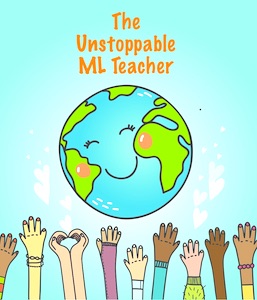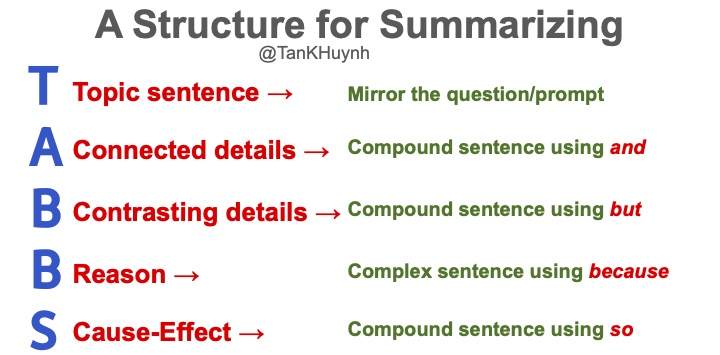A MiddleWeb Blog
This article is part of a series for English language development teachers, drawing on the upcoming book by Tan Huynh and Beth Skelton, Structured Success for Experienced Multilinguals. See the entire series here.

 In an earlier article I shared my approach to sentence-sentence transitions. Now we move to organization at the paragraph level. I was never truly taught how to write a paragraph. Tasks that required paragraphs were assigned and assessed.
In an earlier article I shared my approach to sentence-sentence transitions. Now we move to organization at the paragraph level. I was never truly taught how to write a paragraph. Tasks that required paragraphs were assigned and assessed.
The field has moved to more explicit instruction for paragraph-level writing. A favorite approach is to for teachers to provide a paragraph structure such as the hamburger method. Even more explicit ones include acronyms including CER, RACE, PEAL, and PEEL.
While these structures identify the sequence and type of ideas students have to write, multilinguals sometimes struggle with how to structure their ideas given the various paragraph scaffolds.
After years of attempting to provide more scaffold to these paragraph structures, I have realized that it is much more effective to assign a sentence structure to each part of the paragraph scaffold. Assigning a suggested sentence structure provides the needed support missing in just having giving students a paragraph scaffold.
I would like to share an example of a paragraph support with the suggested sentence structures. I call this one a TABBS paragraph, used for summarizing. Summarizing is often asked of students but never taught explicitly. They often miss the central idea in their summarization as they include too many details. A TABBS paragraph provides a succinct approach to summarizing.


With this approach, each part of the TABBS paragraph builds to a cohesive summarization. We start off with a sentence that introduced the topic. While it can be a simple sentence, I like to have students start their topic sentence with a subordinating conjunction to introduce the topic more elegantly. Students have a variety of subordinating conjunctions to choose from using the WEST BUNDAI acronym.
The next two sentences provide details about the topic, using compound sentences. One sentence shares similar details in the form of a compound sentence joined by and. Students then move to contrasting details about the topic using a compound sentence joined by but. With these two sentences, students would have provided four unique details about the topic while logically grouping them into details that are similar and ones that are different.
The next compound sentence uses a because structure as it provides an explanation about the topic. Since this sentence follows the compound sentence joined by but, students explain the but part. Doing this adds cohesion between the two sentences.
Finally, students conclude their summary, discussing any cause-effect relationship related to the topic using a compound sentence using a so structure. As this sentence follows the because one, students have to explain how the reasoning related to the topic causes something to occur and the consequences it produces.
Here is an example of a summary using the TABBS structure.
While there are many racket sports, badminton is the fastest of them. The shuttles are light, and they are designed to reduce air resistance to increase their speed. The shuttle can also travel at tremendous speed because the rackets are designed to launch them using a whipping action. The whipped shuttle can travel at 450 miles per hour, so hitting the incoming shuttle can be quite difficult.
Assigning a particular sentence structure to each part of the TABBS paragraph makes the summary cohesive as each idea is connected to the next one. Students have to use the different sentence structures to organize their ideas. Additionally, the compound sentence adds some elegance and sophistication to their paragraph.
Closure
When I was a student, I was always expected to summarize. Never once was I taught the sequence of a summary nor the sentence structures I should use to best summarize ideas. With this TABBS paragraph approach, my multilinguals now have an effective strategy to cohesively summarize a concept. This approach makes the invisible visible, hence making high achievement possible and equitable learning a reality rather than a dream.







